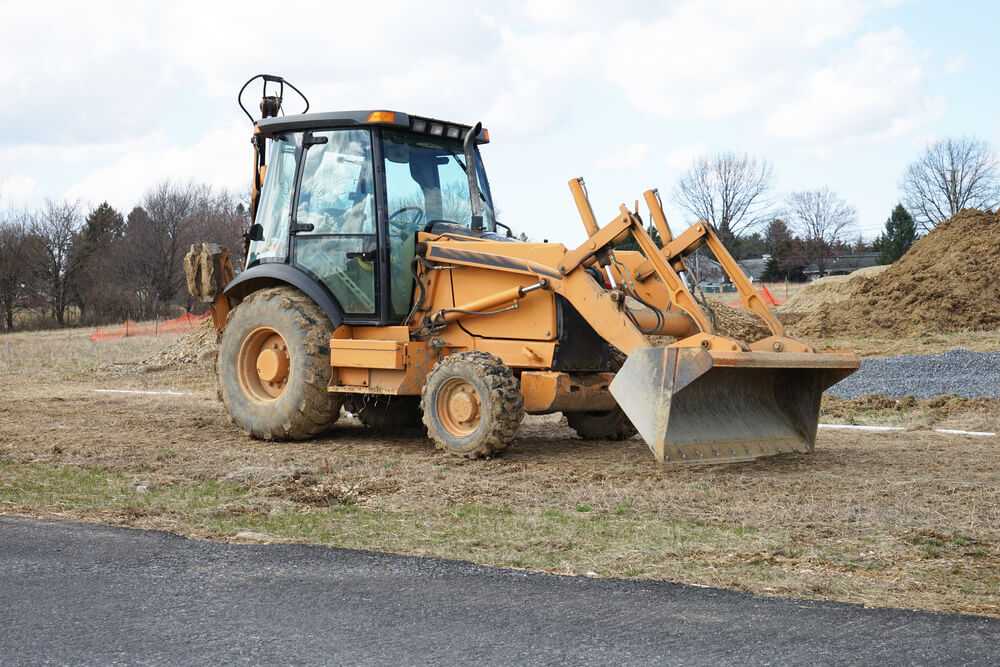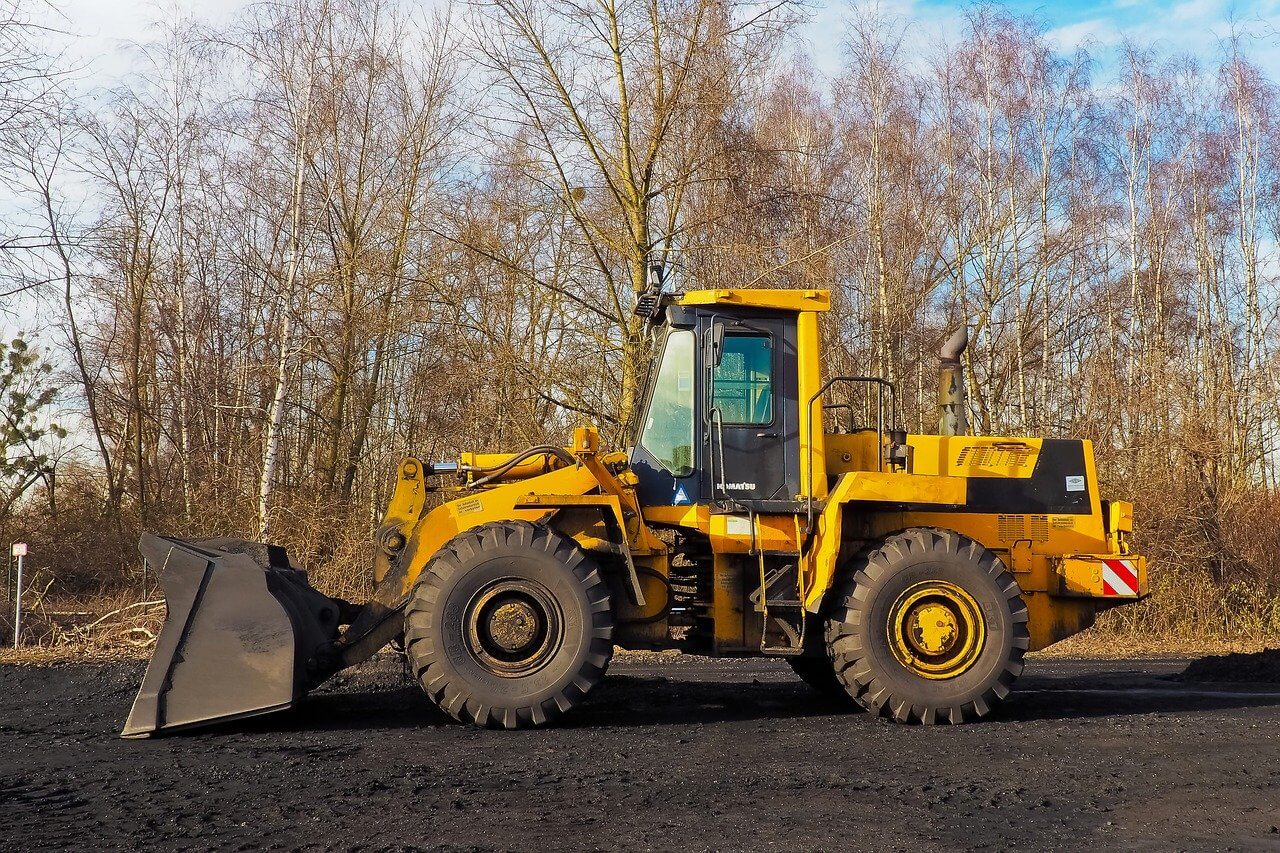It is possible to use a front end loader for grading, leveling and digging. The first step in any of these operations is choosing the right size machine for the job.
You’ll work far more efficiently if the machine you choose is not too large or too small for the task at hand. If you end up with the wrong size machine or the wrong size attachments, you’ll find that your task takes more time it is not as easy to accomplish.
Machine size and weight also makes a difference in relation to the surface being worked. If you’re working with soft ground using a large, heavy machine you’ll find yourself leaving lots of tracks that will need to be covered. In situations such as these, using a smaller, lighter machine is advised.
On the other hand, if you’re working with very rocky land and soil, a heavier and larger loader is a better choice. Below you’ll find some tips for operating your front end loader efficiently.
What You'll Learn Today
How To Grade With A Front End Loader

If you’re attempting to grade in a very tight space, you may wish to use a compact track loader (CTL) along with a large skid steer. A front-end loader that has a standard bucket can be used for grading as long as you take care to fill the bucket completely so that the machine will be balanced.
A CTL that has a longer or wider track base and little more horsepower is an excellent choice for finish grading. This type of machine can easily handle uneven terrain and leaves a very smooth surface.
Sometimes a CTL equipped with GPS grade control, a box blade or 6 way blade can be very effective for grading. These machines excel at maneuverability, speed and size in situations where a standard grader, dozer or skid steer cannot gain access.
Additionally, a CTL is easy to transport from one place to another because of its small size. These little machines are quite versatile because you can change their functions by adding a wide variety of front end attachments.
A skid steer, on the other hand doesn’t do well for finishing on uneven terrain because it has a reduced number of wheel contact points with the ground surface.
A CTL with wide tracks has good ground contact and is able to grade evenly on steep inclines. This is why they are often used on roadsides and along highways to prepare for grass or wildflower seeding.
The best type of CTL for grading is one that has a rigid mount undercarriage. Those that have a flexible or moving undercarriage are easier for the operator to manage, but this very flexibility can interfere with getting an even grade or cut.
When choosing a front end loader for grading, you should also consider load arm design. Machines that have fewer pivot points will not suffer as much from wear and tear.
Additionally, machine that has a larger lower boom will help reduce the amount of wear and tear on the frame of the machine. Vertical pads are more supportive than sloped pads and can help reduce the amount of load placed on the pins.
Carefully consider the way that all of the attachments affect the operation of the machine. Look for attachments that will assist in transferring the weight forward (e.g. box blades or buckets). This helps to keep good traction and prevents the front end from rocking or floating during operation.
A front-end loader that has been equipped with just the right attachments is a very effective grading tool and is especially useful in operation such as backfilling and landscaping.
Attachments you may wish to consider include:
- A power rake is excellent for removing debris and rocks before you lay seed or sod.
- A 6 way dozer blade is a good choice for spreading materials, backfilling basements and also walls.
- A heavy-duty bucket that has a hydraulic tilt attachment adds weight to the front of the machine for greater stability.
- Box blades are essential for precision automatic contour control, slope control and grading.
- A scraper attachment is handy for moving large amounts of material.
- Motor graders turn your CTL into a compact grader.
- Laser or GPS grade control provides pinpointed precision.
Use Attachments Correctly For Greatest Safety And Efficiency

Balance and weight distribution enhances safety and efficiency. A machine that has a 50/50 weight distribution balance cuts a deeper grade.
Positioning attachments in a way that extends the machine’s wheelbase makes operation smoother and safer and improves the quality of the finished grade.
Working with heavier attachments or even filling the bucket with dirt improves traction and keeps the machine floating or moving steadily along the surface of the ground, as opposed to varying with the grade.
Work Slowly And Consistently For Good Grading With A Front End Loader
The quality of your finished grade is a reflection of your experience and expertise. Take your time and pay close attention to detail to create the smoothest and highest-quality grading work.
Work in small sections at a time at a slow and steady pace. Take care not to remove more dirt at a time then you need to or than your machine can handle.
Avoid cutting high spots quickly and all at once. Instead make multiple passes to ensure that you end up with a smooth, uniform terrain.
Grading And Back Dragging With A Loader
How To Level Ground With A Front End Loader
1. Prepare the site. Depending upon where you’re working you may need to mark off your work site with silt fencing.
2. Clear and grub the site of weeds, grass, brush, trees and large rocks as needed.
3. Be sure you have trucks in place to remove surplus dirt rubbish as needed.
4. Identify any underground utilities and mark them with white spray paint or chalk. You may need to contact local utility companies for help with this.
5. Rough cut the grade using visual verification. Begin on a fairly level spot and simply drive forward cutting and smoothing as you go. If you hit a very high spot you may need to backup and shave it off a bit at a time.
6. Once you have rough cut the grade, use a leveling rod and a builders’ transit to shoot the grade elevations. Mark the area with grade stakes to give you guidance for the rest of the job. You may need an assistant for this part of the operation.
7. Establish a benchmark and have your assistant hold the leveling rod there as you take note of it. Next, your assistant should walk across the grading area holding the leveling rod for you to observe as you mark the measurements and determine where soil will need to be added or removed. Notate these adjustments on stakes and drive them into the appropriate points in the grading.
8. Complete grading with the bucket held slightly higher in the front than in the rear. This will give you a clear view as you move forward and plane the grade a bit at a time. Keep the bucket in this position when you need to reverse to scrape and/or spread the soil.
Floating Your Loader Bucket
How To Dig With A Front End Loader
When you dig a hole with a front end loader, you use the bucket to scrape the earth in layers. Drive forward peeling away a layer of earth at a time.
When you hit a rough spot, you can curve the bucket up to scoop and lift the scraped dirt. Don’t rush, instead repeat the process over and over until you achieve the desired result.
- Use the hydraulic up/down lever to set the underside of the bucket on the ground.
- Use the backward/forward tilt lever to tilt the bucket so that the front blade is pointed into the soil.
- Use the forward/reverse lever to move forward, pressing down on the gas pedal with your foot. Move forward carefully as the bucket moves into the load of dirt.
- Ease up on the gas and use the backward/forward lever to tilt the bucket back to scoop the dirt up.
- Use the up/down lever to lift the bucket 1 or 2 feet from the ground. Use the reverse/forward lever to put the front end loader in reverse and back out carrying your scoop of dirt.
- Carry the scoop of dirt to your desired location, stop, lift the bucket to a height of approximately 6 feet. Use the backward/forward tilt lever to empty the bucket.
- Lower the bucket, return to the site and repeat.
I’ve been operating loaders for over 25 years. For anyone to tell you grading is something that can be done without too much trouble is a load of crap. It is the most difficult operation you will ever attempt with a loader. That’s why they make graders. Take advice from a pro that knows. Don’t even entertain this stupid idea and tell those who suggest it to keep their day job. They are not tractor operators by any stretch. I would call them pretty stupid fools.